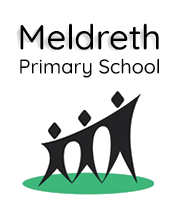Expectations for the End of Year 4
Word reading
- I can apply knowledge of root words, prefixes and suffixes to read aloud and to understand the meaning of unfamiliar words.
- I can read further exception words, noting the unusual correspondences between spelling and sound.
- I attempt pronunciation of unfamiliar words drawing on prior knowledge of similar looking words.
Understanding what I read
- I know which books to select for specific purposes, especially in relation to science, geography and history learning.
- I can use a dictionary to check the meaning of unfamiliar words.
- I can discuss and record words and phrases that writers use to engage and impact on the reader.
- I can identify some of the literary conventions in different texts.
- I can identify the (simple) themes in texts.
- I can prepare poems to read aloud and to perform, showing understanding through intonation, tone, volume and action.
- I can explain the meaning of words in context.
- I can ask relevant questions to improve my understanding of a text.
- I can infer meanings and begin to justify them with evidence from the text.
- I can predict what might happen from details stated and from the information I have deduced.
- I can identify where a writer has used precise word choices for effect to impact on the reader.
- I can identify some text type organisational features, for example, narrative, explanation and persuasion.
- I can retrieve information from non-fiction texts.
- I can build on others’ ideas and opinions about a text in discussion.
Spelling
- I can spell words with prefixes and suffixes and can add them to root words.
- I can recognise and spell homophones.
- I can use the first two or three letters of a word to check a spelling in a dictionary.
- I can spell the commonly mis-spelt words from the Y3/4 word list.
Handwriting
- I can use the diagonal and horizontal strokes that are needed to join letters.
- I understand which letters should be left unjoined.
- My handwriting is legible and consistent; down strokes of letters are parallel and equidistant; lines of writing are spaced sufficiently so that ascenders and descenders of letters do not touch.
Sentence structure
- I can use noun phrases which are expanded by adding modifying adjectives, nouns and preposition phrases.
- I can use fronted adverbials.
Text structure
- I can write in paragraphs.
- I make an appropriate choice of pronoun and noun within and across sentences.
Punctuation
- I use capital letters for names of people, places, day of the week and the personal pronoun ‘I’.
- I correctly use question marks and exclamation marks,
- I can use commas to separate items in a list.
- I can use apostrophes to show where letters are missing and to mark singular possession in nouns.
- I can use inverted commas to punctuate direct speech.
- I can use inverted commas and other punctuation to indicate direct speech.
- I can use apostrophes to mark plural possession.
- I use commas after fronted adverbials.
Number
- I can recall all multiplication facts to 12 x 12.
- I can round any number to the nearest 10, 100 or 1000 and decimals with one decimal place to the nearest whole number.
- I can count backwards through zero to include negative numbers.
- I can compare numbers with the same number of decimal places up to 2-decimal places.
- I can recognise and write decimal equivalents of any number of tenths or hundredths.
- I can add and subtract with up to 4-decimal places using formal written methods of columnar addition and subtraction.
- I can divide a 1 or 2-digit number by 10 or 100 identifying the value of the digits in the answer as units, tenths and hundredths.
- I can multiply 2-digit and 3-digit numbers by a 1-digit number using formal written layout.
- I can solve two step addition and subtraction problems in context.
- I can solve problems involving multiplication.
Measurement, geometry and statistics
- I can compare and classify geometrical shapes, including quadrilaterals and triangles, based on their properties and sizes.
- I know that angles are measured in degrees and can identify acute and obtuse angles.
- I can compare and order angles up to two right angles by size.
- I can measure and calculate the perimeter of a rectilinear figure in cm and m.
- I can read, write and convert between analogue and digital 12 and 24 hour times. I can interpret and present discrete and continuous data using appropriate graphical methods, including bar charts and time graphs.
